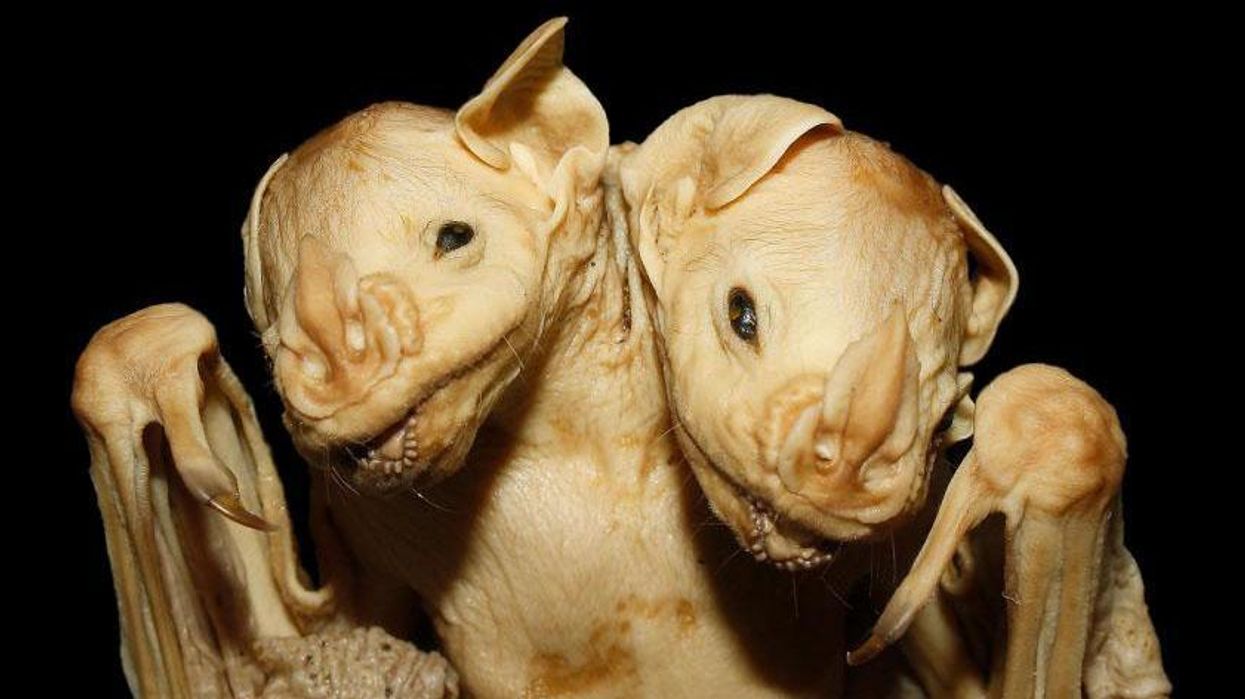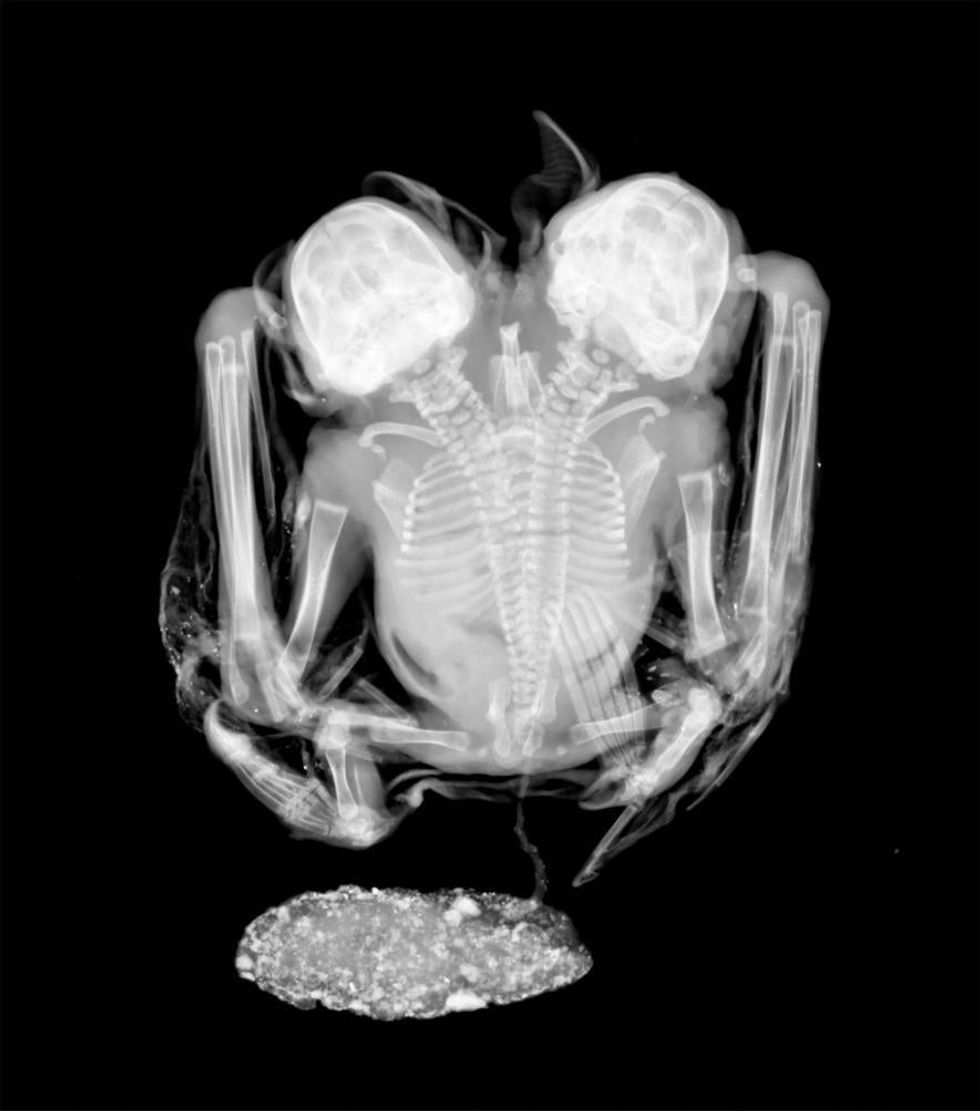News
Greg Evans
Jul 28, 2017

Picture:
MARCELO NOGUEIRA, LABORATÓRIO DE CIÊNCIAS AMBIENTAIS, UNIVERSIDADE ESTADUAL DO NORTE FLUMINENSE
If you want nightmares you've come to the right place.
Back in 2001 a bat sporting two heads was found under a mango tree in the Viana forests of southeastern Brazil.
The bat body was donated to the Federal Rural University of Rio de Janeiro where it has been preserved in 70 percent ethanol ever since, according to IFL Science.
Now, researchers at the State University of Northern Rio de Janeiro have been able to properly study the creature.
Their analysis concluded that the bat's placenta was still attached to their shared bodies upon birth, and their lives would have only been short-lived.
National Geographic reports that the bats were already dead upon discovery as they would have passed away shortly after being born or were possibly stillborn.
Based on their physical characteristics researchers were able to determine that they were Neotropical fruit bats (Artibeus), a breed that can be found in South and Central America as well as some parts of the Caribbean.
When x-rayed it could be seen that, just like a regular bats the twins had two forelimbs and two hind limbs.
However they both had separate spines which eventually joined at the bottom of their back.

They also had separate hearts but only one penis.
This is now the third time that conjoined bats have been found but compared to humans, little is still understood about how they can come into existence.
According to the University of Maryland Medical Centre the survival rate of conjoined human twins is somewhere between 5 and 25 percent and although that is only a small number, it does allow experts to perform in depth studies.
Typically, animals in the wild don't have any type of support, which often leads to their premature deaths.
Despite this, Marcelo Nogueira who conducted the research hopes that the studies conducted on these bats can tell us more about the species.
It is our hope that cases like this will encourage more studies on bat embryology, an open and fascinating field of research that can largely benefit from material already available in scientific collections.
HT National Geographic IFL Science Wiley Online Library iNaturalist
Top 100
The Conversation (0)













